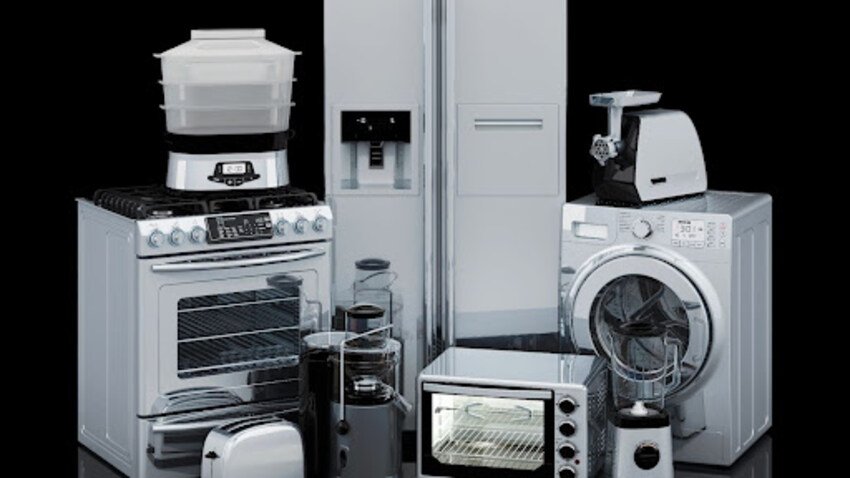Your household appliances are failing faster than they should, and the culprit might be staring back at you in the mirror. Many homeowners are unknowingly shortening their expensive equipment’s lifespan through what seem like perfectly normal daily routines. They are the quiet, gradual killers that turn a 15-year appliance into a 7-year headache.
Think about it. When was the last time you questioned whether that innocent habit of yours might be costing you serious money? The reality is that household habits that damage appliances are everywhere in your routine, hiding in plain sight while they slowly but surely destroy thousands of dollars’ worth of equipment.
Your Kitchen: The Battlefield Where Appliances Go to Die
Let’s start with some hard numbers that’ll make you wince. American households shell out roughly $2,300 yearly just replacing appliances. And here’s the kicker: most of that expense comes from your kitchen, where you’re probably committing common appliance mistakes every single day without realizing it.
If you live in Atlanta, you’re dealing with an extra challenge. The humidity here? It’s brutal on appliances. The water? Hard as a rock. These conditions make your equipment work overtime, which means those daily habits hit even harder. Professional services for appliance repair in Atlanta, GA, report that their emergency calls trace back to completely preventable damage. The kind of damage you’re probably creating right now.
How You’re Accidentally Murdering Your Refrigerator
Your fridge is tougher than you think, but it’s not invincible. Every time you cram those leftovers into an already-packed shelf, you’re blocking the airflow it desperately needs. Result? Your compressor works 25% harder than it should. That’s like forcing someone to run a marathon while breathing through a straw.
Here’s another habit that’s costing you: those quick snack runs where you stand there with the door wide open, deciding what you want. Each time you do this, cold air escapes and your system scrambles to recover. It’s death by a thousand cuts.
And don’t get me started on shoving hot food straight from the stove into the fridge. Sure, it seems convenient, but you’re essentially giving your compressor a heart attack every time. The temperature spike forces it into overdrive, and over months and years, that adds up to serious wear and tear.
Your Dishwasher Doesn’t Want Your Help
This might shock you, but pre-rinsing your dishes is actually sabotaging your dishwasher. Modern machines are engineered to detect food particles; they need them to activate their cleaning cycles properly. When you rinse everything spotless first, you’re confusing the sensors and preventing optimal performance.
Loading technique matters way more than you’d expect. Cramming dishes together or blocking those spinning spray arms with oversized pots? You’re creating dead zones where nothing gets clean, and worse, you’re overworking the pump.
The filter at the bottom of your dishwasher probably looks disgusting right now. When did you last clean it? That buildup isn’t just gross, it’s forcing your pump to work overtime, leading to burnout and expensive repairs.
Microwave Mistakes That Cost Hundreds
Running your microwave empty, even for thirty seconds, can destroy the magnetron, the most expensive part to replace. Without food or liquid to absorb the microwaves, they bounce back and fry the very component that generates them.
Those metal-trimmed dishes you love? They’re creating tiny lightning shows inside your microwave every time you use them. The arcing might look cool, but it’s damaging internal components that cost more to fix than the microwave is worth.
Even something as simple as slamming the door affects the alignment of safety mechanisms. Over time, this creates gaps in the door seal, allowing radiation to leak out and forcing the unit to work inefficiently.
Laundry Room: Where Good Intentions Go Wrong
Your laundry room harbors its own set of appliance-killing habits, and they’re costing homeowners an average of $1,200 in unnecessary replacements. The worst part? These mistakes feel like you’re being responsible.
Washing Machine Woes You Create Daily
Overloading your washer seems economical; more clothes per load means fewer loads, right? Wrong. You’re creating imbalance issues that destroy bearings and transmission components. Those capacity limits aren’t suggestions; they’re engineering specifications designed to keep your machine running smoothly for years.
More detergent equals cleaner clothes, or so you think. In reality, excess soap creates residue that clogs pumps and valves. It’s like slowly choking your machine with good intentions.
Leaving wet clothes sitting in the washer overnight promotes mold growth and damages rubber seals. That musty smell is a sign of deterioration happening inside your machine.
How You’re Accidentally Burning Down Your Dryer
Everyone knows to clean the lint trap, but are you really getting all of it? Even microscopic lint particles accumulate in internal ducts, creating fire hazards while forcing your heating element to work harder than necessary.
Those extra-dry towels you love? They’re a sign that you’re overheating your machine. Excessive drying cycles damage heating elements and sensors, turning what should be a gentle drying process into a slow-cook destruction method.
Dryer sheets coat sensors with chemicals that prevent accurate moisture detection. This forces longer cycles and accelerates component wear, the opposite of what you’re trying to achieve.
HVAC Systems: Your Home’s Most Expensive Victim
Your HVAC system represents up to 15% of your home’s total value, yet it suffers from household habits that damage appliances that you’d never suspect could cause problems. These aren’t obvious mistakes; they’re subtle behaviors that create thousands in unexpected repair bills.
Air Conditioning Assassins Hiding in Plain Sight
Family thermostat battles might seem harmless, but those constant temperature adjustments create rapid cycling that wears out contactors and compressors. Every degree change triggers your system to work harder, and all that starting and stopping takes a toll.
Furniture placement matters more than you think. That perfectly positioned couch blocking your floor vent? It’s creating pressure imbalances that force your system to work overtime while delivering uneven cooling.
DIY maintenance sounds responsible, but amateur efforts often void warranties and cause more damage than they prevent. Even changing filters has specific requirements that well-meaning homeowners frequently miss.
Heating Habits Guaranteed to Cause Failure
Closing vents in unused rooms seems logical. Why heat empty spaces? But you’re creating dangerous pressure imbalances that damage ductwork and force your furnace to work inefficiently. Your system was engineered for specific airflow patterns, and every closed vent disrupts that balance.
Skipping annual inspections allows small problems to become expensive disasters. Those tune-ups aren’t just maintenance; they’re insurance policies against catastrophic failures.
Using space heaters near HVAC equipment interferes with temperature sensors and creates fire hazards. These seemingly independent devices actually conflict with your system’s operation in ways you’d never imagine.
Smart Home Tech: New Problems, Bigger Bills
Modern smart appliances introduce entirely new categories of expensive mistakes. Even tech-savvy homeowners are making costly errors with these connected devices daily.
Weak Wi-Fi doesn’t just prevent remote control; it actually degrades performance. Smart appliances rely on cloud-based algorithms to optimize operations, and connectivity issues prevent firmware updates that include critical appliance maintenance tips.
Research reveals that 40% of smart appliance problems stem from connectivity issues rather than mechanical failures. That’s a staggering number that highlights how our modern conveniences create modern vulnerabilities.
When Voice Control Backfires
Integration errors between voice assistants and appliances create conflicting commands that confuse operational systems. Multiple control sources can override safety protocols and damage equipment in ways traditional appliances never experienced.
Power outage recovery becomes complicated with smart appliances. Battery backup failures can corrupt memory systems, and when power returns, these devices may malfunction or require expensive reprogramming.
Professional Strategies That Actually Work
Professional appliance technicians have insider secrets for extending equipment life by up to 60%. The key? Prevention over reaction. Here’s what they know that you don’t.
Successful appliance maintenance tips focus on monthly, quarterly, and annual schedules. Monthly tasks include cleaning refrigerator coils and checking washing machine hoses. Quarterly work covers HVAC filter changes and dishwasher filter cleaning. Annual professional services provide expert evaluation of all major systems.
Cost-Smart Protection Approaches
Extended warranties make sense for high-tech appliances but not simple mechanical devices. Understanding which coverage provides real value helps you invest protection dollars wisely.
Preventive maintenance costs a fraction of emergency repairs. Regular service calls how to prolong appliance life while avoiding the stress and expense of unexpected breakdowns.
Your Burning Appliance Questions Answered
-
Does unplugging appliances when not in use really extend their lifespan?
Absolutely. Unplugging prevents phantom power draw and protects against power surges, especially benefiting electronics-heavy appliances like smart refrigerators and advanced washing machines.
-
Which household cleaning products cause the most appliance damage?
Bleach-based cleaners damage rubber seals and metal components, while abrasive cleaners scratch surfaces and remove protective coatings on stainless steel appliances.
-
How often should I have my appliances professionally serviced to prevent damage?
Annual service for HVAC systems, every two years for major appliances like refrigerators and washers, and as-needed for smaller appliances showing performance issues.
Read Dive is a leading technology blog focusing on different domains like Blockchain, AI, Chatbot, Fintech, Health Tech, Software Development and Testing. For guest blogging, please feel free to contact at readdive@gmail.com.





